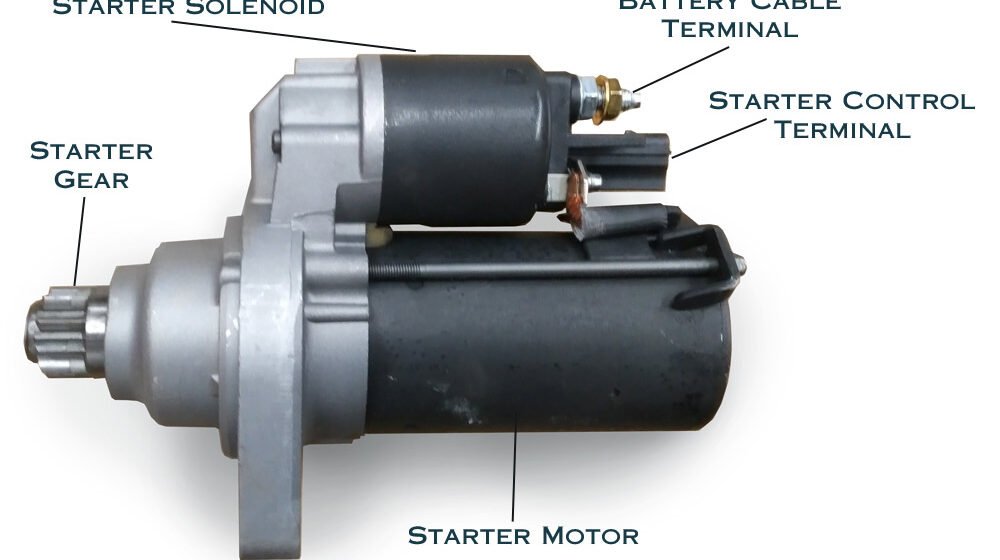When it comes to modern engines, the electric starter is an essential component that ensures a smooth and effortless ignition process. Whether you’re dealing with motorcycles, cars, boats, or industrial machines, a high-quality electric starter can make all the difference in reliability and performance.
In this article, we’ll dive deep into the mechanics of an electric starter, explore its benefits, discuss common issues, and provide maintenance tips to keep it in top condition.
What Is an Electric Starter?
An electric starter is a motorized device that cranks an internal combustion engine to initiate its operation. Before this invention, engines had to be started manually, often requiring significant physical effort using hand cranks. Today, thanks to advancements in technology, the electric starter has revolutionized the way engines are powered up, making the process efficient and user-friendly.
How Does an Electric Starter Work?
The electric starter functions through a simple yet effective mechanism:
- Turning the Key or Pressing the Button: When the driver or operator activates the ignition, a signal is sent to the electric starter system.
- Engaging the Starter Motor: The starter motor draws electrical power from the battery to begin the rotation process.
- Activating the Flywheel: The starter’s pinion gear engages with the engine’s flywheel, causing it to spin and initiate combustion.
- Engine Ignition: Once the engine reaches a certain speed, the electric starter disengages automatically, allowing the engine to run independently.
This process takes mere seconds but plays a crucial role in ensuring that an engine starts reliably every time.
Key Benefits of an Electric Starter
Investing in a high-quality electric starter can provide numerous advantages, including:
1. Convenience and Ease of Use
Unlike traditional hand-cranking methods, an electric starter allows for effortless engine ignition at the push of a button or turn of a key.
2. Reliable Performance
A well-maintained electric starter ensures a consistent starting experience, even in extreme weather conditions.
3. Safety Enhancement
Manual engine starting methods can be dangerous, often leading to injuries due to kickbacks. The electric starter eliminates these risks, providing a safer alternative.
4. Improved Engine Longevity
A properly functioning electric starter ensures that the engine starts smoothly, reducing stress on internal components and extending its lifespan.
Common Issues with Electric Starters
Even the best electric starter systems can experience problems over time. Here are some of the most common issues and their possible causes:
1. Starter Motor Fails to Engage
- Possible Causes: Weak battery, faulty solenoid, damaged wiring.
- Solution: Check the battery voltage and inspect the starter wiring for any loose connections.
2. Clicking Sound but No Start
- Possible Causes: Low battery charge, corroded battery terminals, worn-out starter motor.
- Solution: Ensure that the battery is fully charged and clean any corrosion on the battery terminals.
3. Grinding Noise When Starting
- Possible Causes: Worn-out starter gear or damaged flywheel teeth.
- Solution: Inspect the flywheel and starter gear for excessive wear and replace if necessary.
4. Starter Motor Runs Continuously
- Possible Causes: Stuck solenoid or faulty ignition switch.
- Solution: Test the ignition switch and solenoid, replacing any defective components.
Maintenance Tips for a Long-Lasting Electric Starter
To keep your electric starter in peak condition, follow these maintenance tips:
1. Regularly Check Battery Health
Since the electric starter relies on battery power, maintaining a fully charged and functional battery is crucial for optimal performance.
2. Inspect and Clean Connections
Corroded or loose wiring can prevent the electric starter from receiving adequate power. Regularly inspect all electrical connections and clean them if needed.
3. Lubricate Moving Parts
Keeping the starter motor’s moving parts well-lubricated reduces friction and prevents premature wear. Use appropriate lubricants as recommended by the manufacturer.
4. Replace Worn-Out Components
If you notice signs of wear on gears, solenoids, or brushes, replace them before they cause complete starter failure.
Choosing the Right Electric Starter for Your Vehicle or Equipment
When selecting an electric starter, consider the following factors:
1. Compatibility
Ensure that the electric starter you choose is compatible with your vehicle or equipment’s engine specifications.
2. Power and Efficiency
A high-quality electric starter should provide sufficient torque and power for reliable ignition without excessive energy consumption.
3. Durability and Build Quality
Look for starters made from robust materials to withstand long-term use and harsh environmental conditions.
4. Brand Reputation and Reviews
Opt for trusted brands with positive customer feedback to ensure you get a reliable and long-lasting electric starter.
Final Thoughts: Why the Electric Starter Is Essential
The electric starter has transformed the way we start engines, making the process faster, safer, and more efficient. Whether you’re using it for your car, motorcycle, or industrial machinery, maintaining a well-functioning electric starter is crucial for seamless operation.
By understanding how an electric starter works, recognizing common problems, and following proper maintenance practices, you can ensure a longer lifespan and reliable performance from this essential component.
If you’re in need of a high-quality electric starter, make sure to choose one that matches your engine’s requirements and comes from a reputable manufacturer. Investing in the right electric starter will save you time, effort, and costly repairs in the long run.





